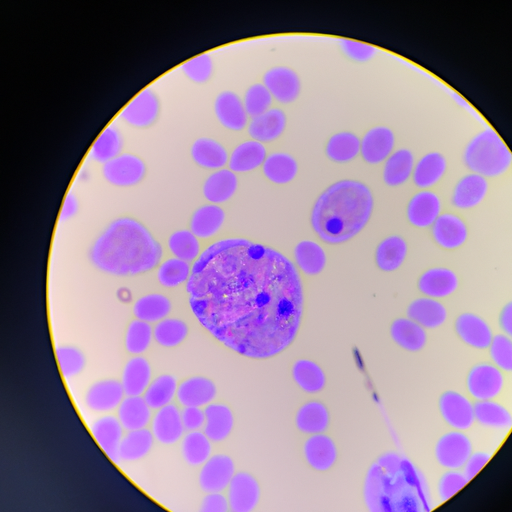
Sickle cell anemia is a genetic disorder that affects the red blood cells, causing them to become misshapen and sticky. This condition can lead to a range of health problems, including anemia, organ damage, and a higher risk of infections. Understanding the basics of sickle cell anemia, including its causes, symptoms, and treatments, is crucial for managing this condition effectively.
Causes of Sickle Cell Anemia
Sickle cell anemia is caused by a mutation in the gene that provides instructions for making a protein called hemoglobin. Hemoglobin is a protein in red blood cells that carries oxygen throughout the body. In individuals with sickle cell anemia, the hemoglobin is abnormal, causing the red blood cells to become crescent or sickle-shaped. These abnormally shaped cells can get stuck in small blood vessels, leading to pain, organ damage, and other complications.
Sickle cell anemia is an inherited condition, meaning it is passed down from parents to their children. To develop sickle cell anemia, an individual must inherit two copies of the defective gene, one from each parent. If an individual inherits only one copy of the defective gene, they will have the sickle cell trait, which may cause mild symptoms or no symptoms at all.
Symptoms of Sickle Cell Anemia
The symptoms of sickle cell anemia can vary widely from person to person and can range from mild to severe. Some of the most common symptoms of sickle cell anemia include:
1. Anemia: Sickle cell anemia can cause a low red blood cell count, leading to fatigue, weakness, and pale skin.
2. Pain crises: Individuals with sickle cell anemia may experience episodes of severe pain, known as pain crises, due to blocked blood flow.
3. Swelling of hands and feet: The blocked blood flow can cause swelling, especially in the hands and feet.
4. Infections: Sickle cell anemia can weaken the immune system, making individuals more susceptible to infections.
5. Vision problems: The abnormal red blood cells can damage the blood vessels in the eyes, leading to vision problems.
In addition to these symptoms, individuals with sickle cell anemia may also experience delayed growth and development, frequent infections, and a higher risk of stroke. It is important for individuals with sickle cell anemia to receive regular medical care to manage their symptoms and prevent complications.
Treatments for Sickle Cell Anemia
While there is currently no cure for sickle cell anemia, there are several treatments available to help manage the symptoms and complications of this condition. Some of the most common treatments for sickle cell anemia include:
1. Pain management: Pain crises are one of the most common symptoms of sickle cell anemia, and they can be extremely debilitating. Medications such as opioids, nonsteroidal anti-inflammatory drugs, and other pain relievers may be used to manage pain during a crisis.
2. Blood transfusions: In some cases, individuals with sickle cell anemia may need regular blood transfusions to increase their red blood cell count and improve their overall health.
3. Hydroxyurea: This medication can help reduce the frequency of pain crises and the need for blood transfusions in some individuals with sickle cell anemia.
4. Bone marrow transplant: In severe cases of sickle cell anemia, a bone marrow transplant may be considered as a potential cure for the condition. However, this treatment option is not without risks and complications.
In addition to these treatments, individuals with sickle cell anemia may also need to receive vaccinations, antibiotics, and other medications to prevent infections. It is also important for individuals with sickle cell anemia to stay well-hydrated, avoid extreme temperatures, and manage their stress to reduce the risk of pain crises and other complications.
Living with Sickle Cell Anemia
Living with sickle cell anemia can be challenging, but with proper medical care and lifestyle management, individuals with this condition can live full and rewarding lives. It is important for individuals with sickle cell anemia to work closely with their healthcare providers to develop a comprehensive treatment plan that meets their unique needs. This may include regular check-ups, laboratory tests, and genetic counseling to help individuals understand their condition and make informed decisions about their care.
It is also important for individuals with sickle cell anemia to take care of their overall health by eating a balanced diet, exercising regularly, getting enough sleep, and avoiding harmful substances such as alcohol and tobacco. Furthermore, it is important for individuals with sickle cell anemia to have strong social support from family and friends and to seek out resources and support groups to help them navigate the challenges of their condition.
Understanding the basics of sickle cell anemia is crucial for individuals living with this condition, as well as for their families, caregivers, and healthcare providers. By being informed about the causes, symptoms, and treatments of sickle cell anemia, individuals can better manage their condition and improve their quality of life.
In conclusion, sickle cell anemia is a complex and challenging condition that requires ongoing medical care and management. By understanding the basics of this condition, individuals with sickle cell anemia can make informed decisions about their care and take steps to live their best lives despite the challenges they may face. With ongoing research and advancements in treatment, there is hope for improved outcomes and quality of life for individuals with sickle cell anemia in the future.












